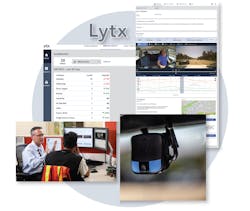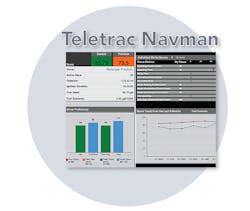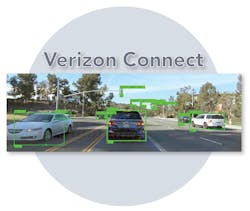“Work Smart – Work Safe” is a motto you see in the office of almost every contractor, no matter their specialty. You can find the phrase posted somewhere on almost any job site (usually next to a whole page of OSHA regulations).
And yet there are plenty of contractors—who would never think of going on a job site without their personal protective equipment, who would never think of entering an unprotected trench or doing hot work without a fire watch—who pay very little attention to driver safety, despite the fact they spend a lot of time behind the wheel.
Why? Because unlike transport drivers, contractors don’t think of driving as their job, it’s just the way they get to the job. Likewise fleet managers using an integrated management solution might have dispatch and scheduling as their primary concerns, fuel economy as a secondary concern, and only then look to the system as a way to improve safety and coach better driver behaviors.
But driver coaching is an essential element of any fleet management system. Embracing it can deliver a huge return on investment; ignoring it can lead to expenses, liabilities and injuries. And if all that isn’t enough, there’s a company’s reputation to consider.
According to a recent report, Collision Course: Commercial Vehicle Driving Safety released by Verizon Connect, 67 percent of American drivers believe commercial vehicle operators are more focused on their schedule than on safety. While only three percent of all severe crashes in the U.S. involve commercial trucks, 81 percent of people say they have witnessed a commercial vehicle being driven dangerously.
Given that uphill battle against public perception, keeping your most expensive pieces of equipment—that are typically blazoned with your company logo—out of accidents is an essential part of managing your company’s image.
Real Results
It can be complex implementing a full-featured fleet management solution. There are a lot of choices to be made about the kinds of hardware and software, and how the system will be configured to meet the needs of your business (and all companies interviewed for this feature stress that their solutions are customized to the individual user, and all come with programs for training the end-user and partnering with them for success). But the end results can have a big impact on operations, particularly when it comes to safety.
Del Lisk is VP of Safety for Lytx, a fleet management solution that combines video, machine vision technology, and vehicle data. He came to the position from a driver training company called Smith Systems that has trained thousands of commercial drivers.
“We recently did a study with service fleets,” Lisk says, “this was 16 clients, about 78,000 vehicles, and the numbers we got from that, reduction in claims ranged from 45 to 75 percent, fuel savings ranged from 6 to 12 percent, reduction in maintenance costs was between 10 and 15 percent between those 16 clients.”
Oswaldo Flores, Compliance and Safety Product Manager for Teletrac Navman, a solution that also offers a combination of GPS and video, estimates that with a good coaching program, most customers see a 30 percent increase in driver risk improvement, i.e., less incidents and accidents reported.
A specific case is offered by Ryan Driscoll, VP of Marketing for GPS Insight, a solution that combines GPS tracking with a 360-degree camera functionality. “We have a customer with 58 vehicle accidents and 47 employee injury claims during the preceding year,” Driscoll says. “A trend analysis was conducted identifying root causes in each category and a corrective action plan was formulated… By tracking negative driver behaviors, they have been able to reduce the number of traffic citations received and correct negative driver behaviors resulting in fewer accidents. The next year their vehicle accidents had dropped to 19 (all minor) and 21 employee injuries. This is a 67 percent decrease in accidents and 55 percent decrease in employee injury claims due to improved training and management awareness of driver behavior using GPS Insight.”
Results vary based on the size of the fleet, type of work and area of operation. And again, some outcomes can be worse than others; a single bad accident can result in a million-dollar settlement.
Getting Insured – Staying Insured
Of course, it probably isn’t your company that’s going to be paying that settlement, it’s your insurer. And insurance companies have taken a look at the numbers, like all good actuaries do. As a fleet management system leads to a safer business, insurance rates naturally begin to fall.
“Many of these carriers, they tend to re-asses every three years,” Del Lisk says. “So in terms of incentive rate reduction, anecdotally I hear a lot of good stories about that, but that takes place over time as the company builds a track record of successfully reducing crashes.”
Some insurers are offering their customers with fleets a break from the outset if they are using a fleet management solution. On the other hand, some are refusing flat-out to ensure some fleets unless they have a solution already in place.
Steve Wells is the Founder and Chief Marketing Officer for Clearpath GPS, a company that combines video, GPS and telematic tools as part of its solution. “We’re starting to hear from people that they are being told to deploy tracking and dashcams or they would simply not be covered. Not even, ‘Will I get a discount?’ But, ‘We won’t insure you unless you put this in.’”
Getting the Right Data
All the solutions profiled in this feature—and many others besides—are able to capture typical telematic data: speeding, hard breaking, hard cornering, hard acceleration etc. etc. A telematic solution will also give the vehicle location, a vital piece of information in stopping perhaps the most common of unsafe behaviors: unauthorized use. Just because the employee is off the clock does not mean the company is no longer liable for the accidents they may cause.
In addition, they all include some form of video capture. That video component has become more and more essential in recent years. According to Kevin Aries, Head of Global Product Success, Verizon Connect , “The video is the context and the evidence... Integrated video is a means of enabling you to have a more meaningful conversation with your driver. Data speaks volumes, visual data only improves how you can deal with driver safety concerns.”
While the telematics component can report the “what” of an incident (hard breaking, for example) the video component can tell a fleet manager the “why” (the driver was cut off by another vehicle—or alternately, the driver was looking at their phone and didn’t see the stoplight change).
Before, the problem with video capture was simple information overload. Who has the time to sit and look through hours and hours of video—even at high speed? But the new systems like Verizon Connect, Clearpath GPS and Lytx have solved that by incorporating the video and the telematics system. Now when an incident happens the system instantly takes a 12- or 20- second clip from the video stream. That clip gets sent to the cloud and gets reviewed both by sophisticated Artificial Intelligence programs as well as human eyeballs. If it meets a set of criteria established by the customer, it then gets forwarded to a fleet manager.
And of course, managers can also review a particular time mark on the video, to see if, say, a gate was closed preventing access to a work site, or if a company-owned vehicle really did back into a garage door last week.
Two of the systems mentioned above, Lytx and Clearpath GPS, also include a cab-facing camera. This can capture important information on unsafe driver behaviors, such as eating or texting while driving.
Many systems also offer geo-fencing; marking off certain sections of an area in different ways and giving different vehicles different permissions. For example, if a vehicle should never leave a city, the geo-fence can be set at the city limits and alert if the vehicle crosses them. A manager can establish a set of conditions within a geo-fence—say, a speed limit for a particular job site—and receive an alert if that limit is exceeded.
“It’s one thing to track a dot on a map and know where everything is going and what it’s doing,” Steve Wells says, “but the geo zones really make this an automatic tool, constantly watching over the fleet and making sure it’s doing the things you expect, and then highlighting the exceptions, because not a lot of business owners have the time to sit there and watch a screen all day long.”
Coaching for Success
The real value in the vast amount of data these systems collect is in coaching better driver behaviors. “There’s a saying,” Oswaldo Flores says, “you spend 80 percent of your time managing 20 percent of your bad drivers… we want to highlight that 20 percent and allow managers and administrative staff to go around doing their day job, but nonetheless giving them visibility and insight to be able to coach and manage that 20 percent.”
Some of those functions include real-time, in-cab driver alerts for, say, speeding or cornering too fast. Sometimes, just knowing that they are being monitored by a fleet management system is enough to modify driver behaviors for the better.
All these systems include multiple driver report functions that make it easy to set conditions and the rank drivers from safest to least safe. In, for example, the Clearpath GPS system, as described by Steve Wells: “Our driver behavior report, it’s a bar chart, a stack-ranking of all the different driver behavior; who has speeding events and hard accelerations. But the important thing we do with that is we normalize it over a hundred-mile basis. You get a picture of who really is your unsafe driver, because your unsafe driver may only have driven a small amount of time but have very many events, versus someone who has driven a lot but only has very few.”
All the solutions providers agree that, first, any driver coaching program need to be part of a company’s overall safety culture. Wells delivered one anecdote about a company that posted its top speeder report in the company breakroom—and had their speeding problems disappear almost overnight.
And they agree that second, good behaviors need to be incentivized. Whether it’s a few extra dollars in bonus money, a Starbucks gift card, or just company-wide recognition, the safe drivers need to be rewarded, and shown to be rewarded.
Through it all, you need to keep an eye not just on your drivers, but on the people doing your coaching as well. Within the Lytx system, “There’s a score for each coach,” Del Lisk says, “and you can tell which coaches are being effective at changing the behavior of their group, and which are not as effective… If you don’t do that, how do you manage your coaches?”
Beating Big Brother
When implementing a comprehensive fleet management solution, there can sometimes be pushback from drivers, especially if they used to (as many service professionals are) a high level of independence. In this hyper-connected day and age, it can sometimes feel like every step we take is scheduled and monitored. In-cab camera solutions can particularly come in for this type of criticism.
The key getting buy-in from the drivers themselves, and that requires transparency, honesty and fairness.
“Over time,” Kevin Aries says, “workers see the benefits of the technology for the company, even if there’s resistance at first.” Some of those benefits can include exonerating drivers for accidents that aren’t their fault. It means an overall safer work environment. Also, the freedom of not having to relay their status back to an office, of not having to constantly update a dispatcher when they finish a job.
Most employees also understand that intelligent fleet management is just part of running a competitive contracting business. “I think workers and employees recognize this,” Aries says, “that when companies have a better handle on their most expensive assets… it allows them to get more done in a day. And everyone wants to work for a company that is growing, that is becoming more efficient, that is able to take on more jobs and be more productive.”
About the Author
Steve Spaulding
Editor-in-Chief - CONTRACTOR
Steve Spaulding is Editor-in-Chief for CONTRACTOR Magazine. He has been with the magazine since 1996, and has contributed to Radiant Living, NATE Magazine, and other Endeavor Media properties.




